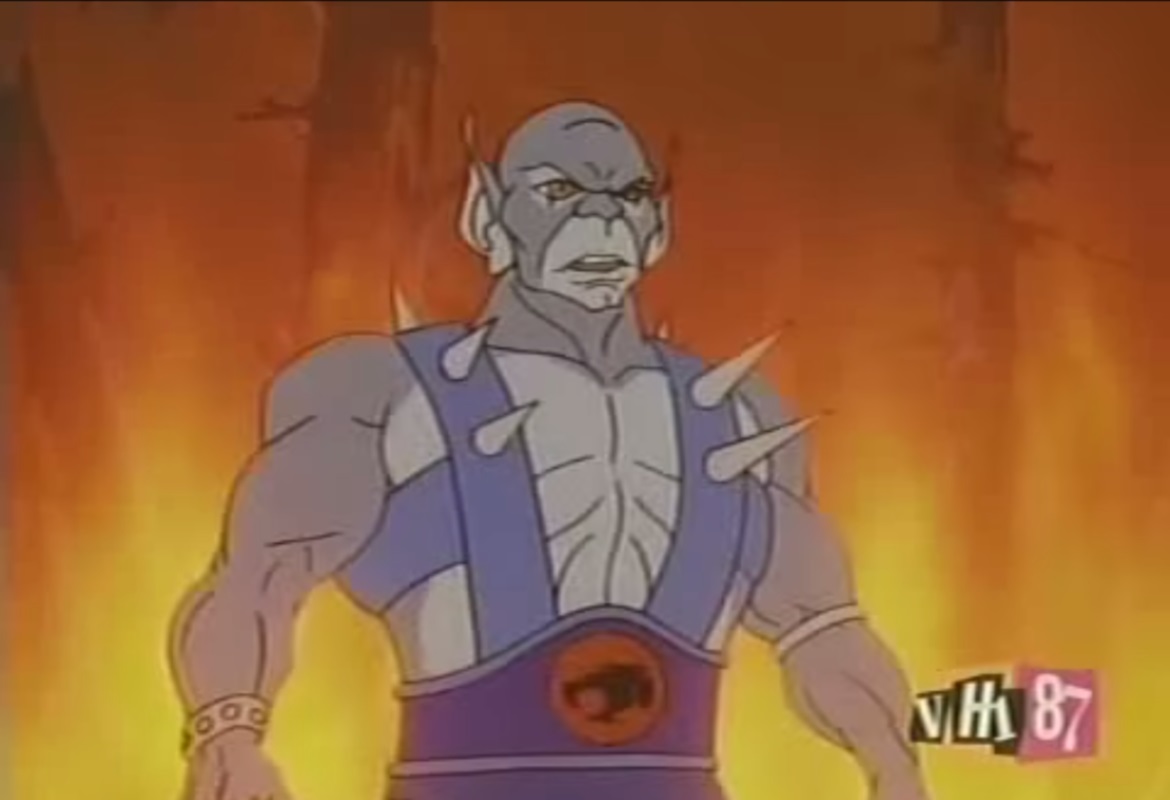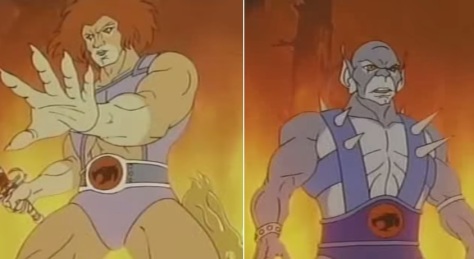Here’s a new series! If you have been following my “Queer Coded” series, this new set of articles,”Color Coded,” follows the same set-up; I discuss a character and how they’ve been coded by their makers, Hollywood, etc. to be a stand-in for something else. In the “Queer Coded” series, the characters were discussed in the realm of perceived queerness. In “Color Coded,” the characters mentioned will be discussed in terms of their perceived non-whiteness.
This series is also a fan suggestion! So if you have any suggestions for future series, feel free to tweet me, leave a message on the COLOR Facebook page, or email me at the address listed in the left sidebar.
With that said, let’s get on with the inaugural “Color Coded” post and discuss one of my favorite Thundercats, Panthro.
I will start the analysis with a quote from Usher, who talked about Thundercats during VH1’s I Love the ’80s. “Panthro was my favorite. He was the blackest one.” (If you want to see the part of the episode featuring Usher, click the link and skip to about 28:40.) Usher is right, just as right as he’s had been as a judge and mentor on The Voice. Panthero was the blackest one.
I know there will be some out there who will say, “Monique, come on! The Thundercats aren’t even humans! They’re crazy-colored cats! You see way too much conspiracy into things!” But let’s just start with the optics and progress further into the character designs.
Here’s a side-by-side of Lion-O and Panthero.
Let’s start with the coloring. Most of the other Thundercats are in shades of orange or (literal) white, have spots, stripes or whathaveyou. Lion-O is the only Thundercat that’s an earthly flesh tone color. It’s also interesting that Lion-O’s skin tone is the only tone that corresponds with an earth-bound “white” character. Meanwile, Panthro is a blue-ish gray tone; his coloring already “others” him from everyone else, while Lion-O is colored in a way to signify to the audience that we, as humans, are supposed to identify with him. In other words, Lion-O’s coloring is another way the media uses whiteness as the default for characters.
Now let’s get into the actual character designs. The muscles don’t really depict anything since all the grown-ups are over-muscled in this show. The real telling point of racial coding is in the facial features. Lion-O’s face is conventionally “white,” particularly with his angular nose. Panthro, on the other hand, is drawn as more broad and with a wider nose. Of course, anyone can have any type of nose, but you and I both know that Panthro’s face, particularly his nose, codes as at least “non-white,” if not “black.”
The next thing to look at—or listen to, as it were—are the voices. Without knowing who Lion-O and Panthro’s voice actors are, their voices also code for “white” and “non-white” respectively. But it’s also worth noting that Panthero’s voice is Earle Hyman, aka Grandpa Huxtable from The Cosby Show. A black dude.
(Also, if you’re interested, Larry Kenney, the voice of Lion-O, had an extremely interesting career, starting in 1960s radio and eventually becoming a part of Imus in the Morning. He also became the voice of Sonny, the mascot for Cocoa Puffs and Count Chocula for the Count Chocula cereal.)
I don’t know what Usher’s reasoning for saying Panthro was the blackest one is, but I can bet you that everything I just explained is what Usher—and many others—internally recieved as tacit knowledge, which led to the conclusion that Panthro’s black.
What do you think about this? Give your opinions in the comments section below! Also, make sure to follow COLOR on Facebook and Twitter!

